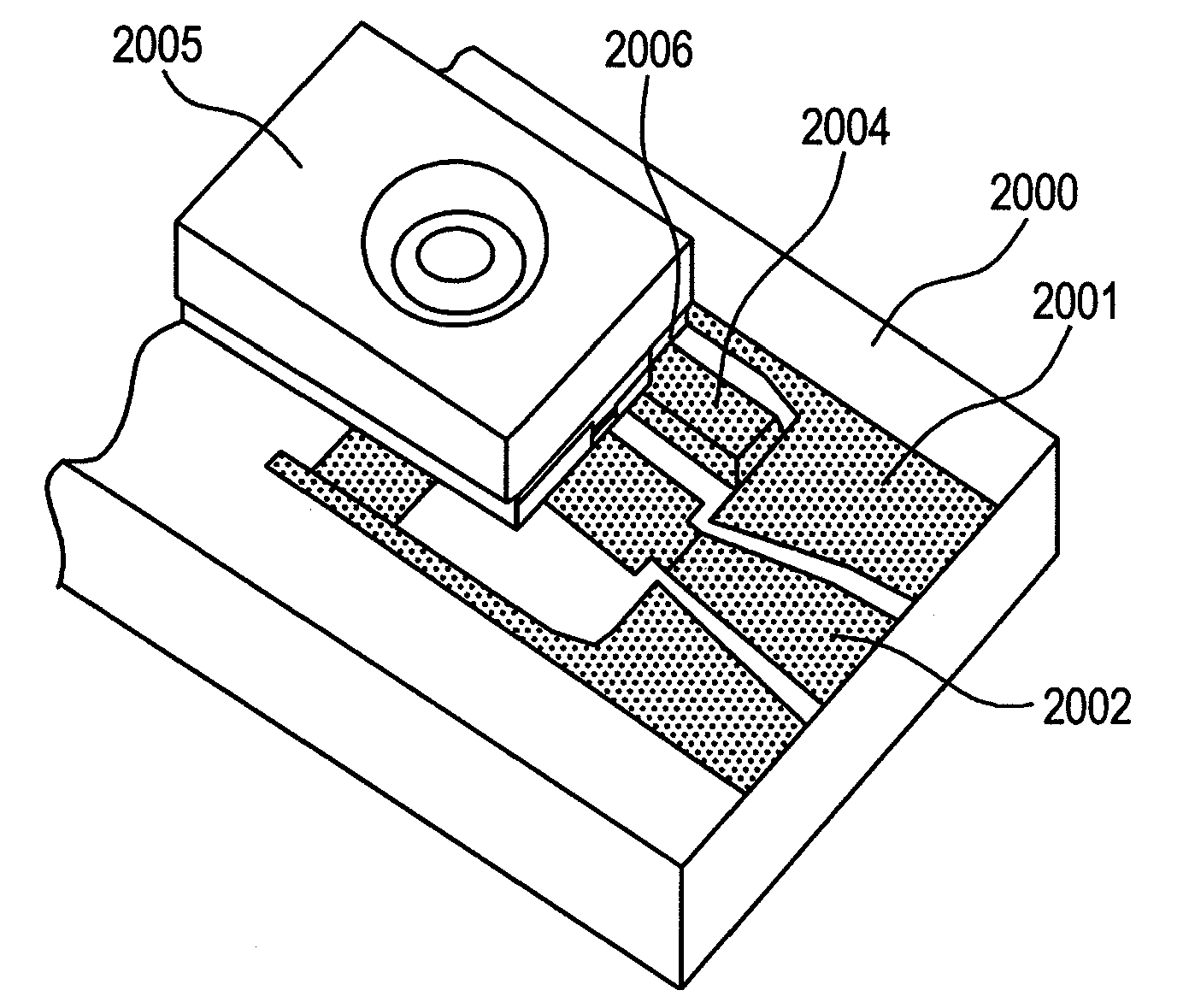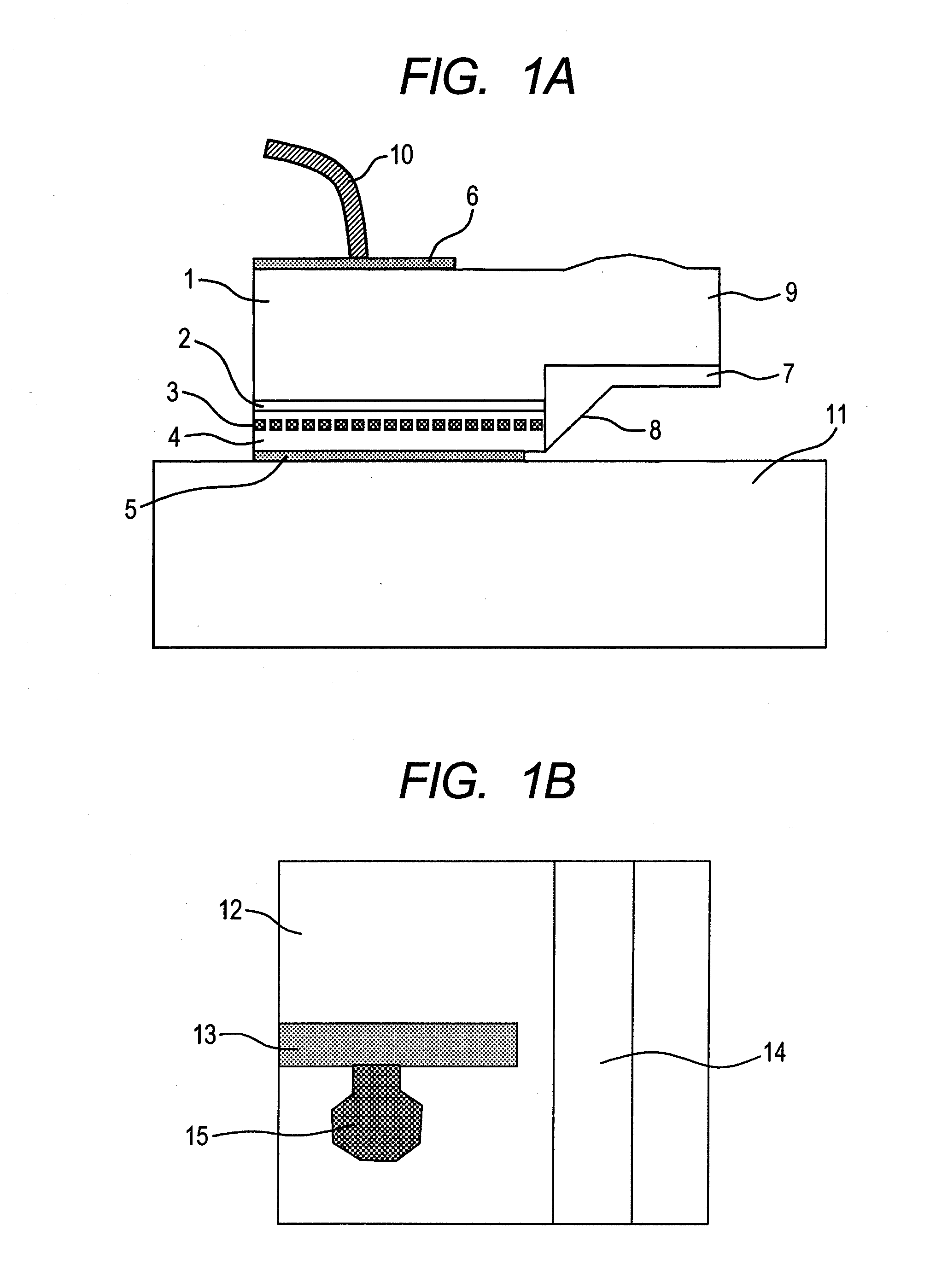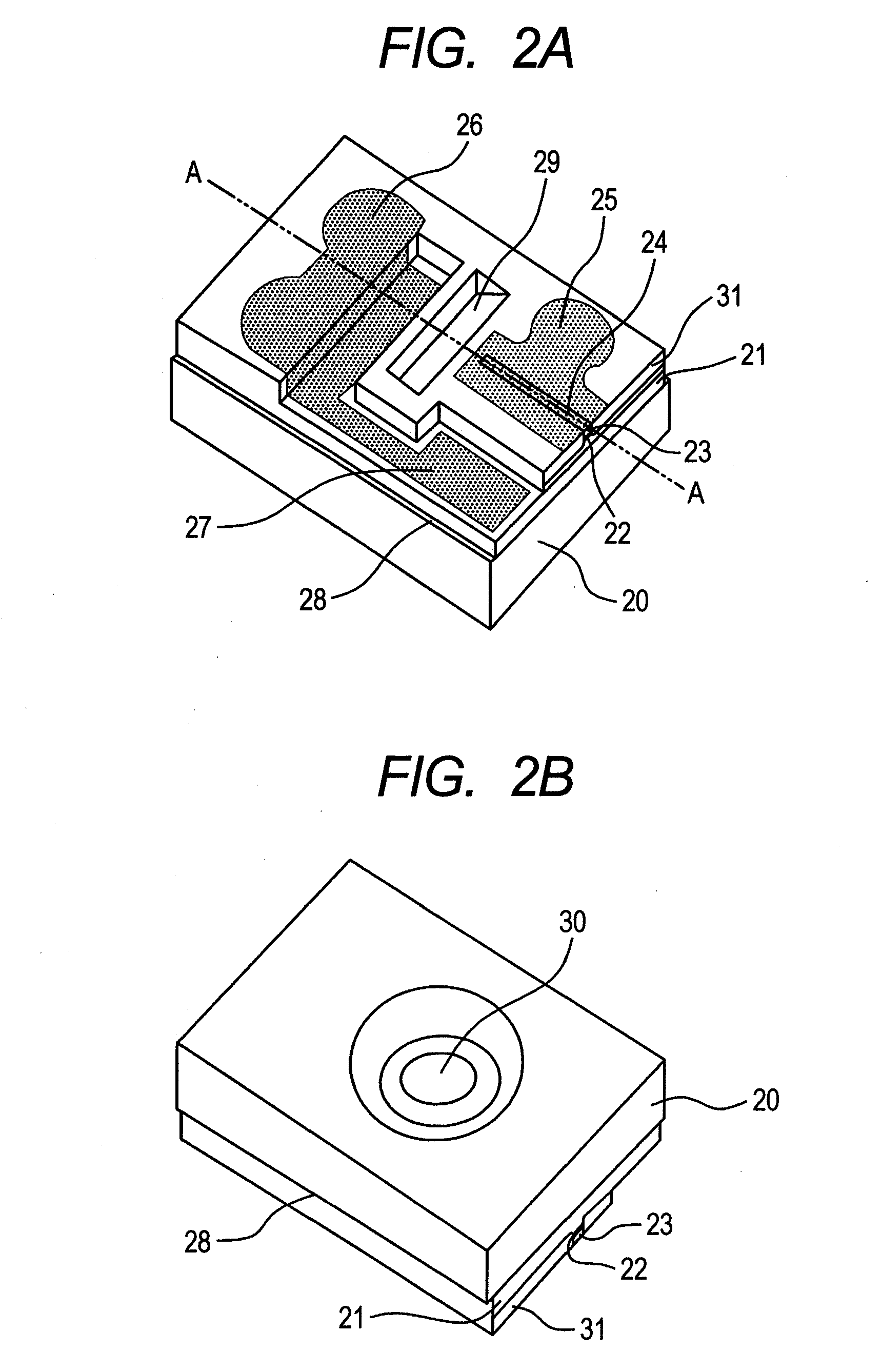Surface emission laser
a laser and surface technology, applied in the field of surface emission lasers, can solve the problems of difficult to obtain high optical output, short cavity length, and inconvenient multi-channel high-density mounting and downsizing of the entire module, and achieve the effect of reducing the increase of parasitic capacity, improving radiation performance, and reducing the parasitic capacity
- Summary
- Abstract
- Description
- Claims
- Application Information
AI Technical Summary
Benefits of technology
Problems solved by technology
Method used
Image
Examples
first embodiment
[0051]A structure of a horizontal-cavity surface-emitting laser according to a first embodiment will be described using FIG. 2A, FIG. 2B, FIGS. 3A to 3F, and FIGS. 4A to 4C. The embodiment is an example of applying the present invention to a horizontal-cavity surface-emitting laser with a width of 250 μm. FIG. 2A is a birds-eye view of a surface of a laser element, and FIG. 2B shows a light emitting surface of the laser element. The horizontal-cavity surface-emitting laser of the embodiment is formed in such a manner that an n-type semiconductor layer 21, an active layer 22, and a p-type semiconductor layer 23 are laminated and grown in this order on an Fe-doped semi-insulating semiconductor substrate 20, and further a diffraction grating layer (not shown) is formed directly on the active layer 22. N-doped InP is used for the n-type semiconductor layer 21, p-doped InP is used for the p-type semiconductor layer 23, and, for example, a strain quantum well structure of InGaAlAs is used...
second embodiment
[0077]A second embodiment is an example in which the present invention is applied to an RWG-type horizontal-cavity surface-emitting laser with a width of 250 μm. FIG. 5A is a birds-eye view of a surface of the laser element, and FIG. 5B shows a light emitting surface. Further, FIG. 5C is a cross-sectional view in the direction orthogonal to the optical axis in which the laser element is mounted. The structure of the laser element will be described in detail using FIG. 5A and FIG. 5B. The laser element is formed in such a manner that an n-type semiconductor layer 4001, an active layer 4002, and a p-type semiconductor layer 4003 are laminated and grown in this order on an Fe-doped semi-insulating semiconductor substrate 4000, and further a diffraction grating layer (not shown) is formed directly on the active layer 4002. N-doped InP is used for the n-type semiconductor layer 4001, p-doped InP is used for the p-type semiconductor layer 4003, and, for example, a strain quantum well stru...
third embodiment
[0083]FIG. 6 shows a third embodiment in which the present invention is applied to the horizontal-cavity surface-emitting laser. FIG. 6 is a birds-eye view of the laser element. The embodiment is an array-type laser in which plural horizontal-cavity surface-emitting lasers were formed on the same substrate. In the embodiment, a 4-channel parallel structure was employed. Further, the RWG type or the BH type may be employed. However, the embodiment employed the RWG type. Laser elements 3003 forming the 4-channel array are electrically separated from each other through the electricity separation groove 4008 as shown in the single laser element of FIG. 3. The manufacturing method is the same as the second embodiment. It should be noted that the substrate used in the embodiment was a semi-insulating semiconductor substrate, but a lamination structured substrate formed using semi-insulating semiconductor layers and conductive semiconductor layers may be used. In such a lamination structur...
PUM
 Login to View More
Login to View More Abstract
Description
Claims
Application Information
 Login to View More
Login to View More - R&D
- Intellectual Property
- Life Sciences
- Materials
- Tech Scout
- Unparalleled Data Quality
- Higher Quality Content
- 60% Fewer Hallucinations
Browse by: Latest US Patents, China's latest patents, Technical Efficacy Thesaurus, Application Domain, Technology Topic, Popular Technical Reports.
© 2025 PatSnap. All rights reserved.Legal|Privacy policy|Modern Slavery Act Transparency Statement|Sitemap|About US| Contact US: help@patsnap.com



